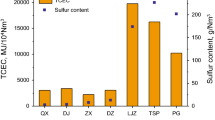Abstract
In the process of aluminum electrolytic anode production, raw anode volume density is an important indicator of anode quality, which is of great significance to ensure the quality of raw anode volume density through raw anode production control parameters and the ratio of raw material. Considering the nonlinear characteristics of the raw anode production process and combining the advantages of the neural network in the nonlinear prediction problem, deep neural networks are used to model the raw anode volume density. For the uncertainty of neural network model structure, a competitive evolutionary adaptive genetic algorithm is proposed to determine the network model structure. The algorithm selects well-performing individuals through competitive fitness values to form progeny populations. During the process of genetic variation, the variation probability is adaptive calculated from the fitness values of the parent and the current number of population iterations to converge the optimal results. Experimental results show that in terms of production data, the optimization ability of the neural network model structure is significantly improved compared with other algorithms, with the root mean square error of the prediction value of the raw anode volume density is 0.005, which is smaller error than other methods.








Similar content being viewed by others
References
Qing-hua T, Jianbang H, et al. Prediction for oxidation leaching behavior of antimony containing sulfide ore based on artificial neural network model. Trans Nonferrous Metals Soc China. 2018;28(10):2103–11.
Luobing L, Xiaolan G, et al. Prediction of maximum ground settlement induced by shield tunneling based on recurrent neural network. Chin Civil Eng J. 2020;53(S1):13–9.
Yong-feng Z, Zhi-qiang LU. Remaining useful life prediction based on an integrated neural network. Chin J Eng. 2020;42(10):1372–80.
Li Q, Xu Z, Shen X, et al. Predicting Business Risks of Commercial Banks Based on BP-GA Optimized Model; 2021.
Ortego P, Diez-Olivan A, Ser JD, et al. Evolutionary LSTM-FCN networks for pattern classification in industrial processes. Swarm Evol Comput. 2020;54:100650.
Hui L, Pengfei Z, et al. Feature selection of converter steelmaking process based on the improved genetic algorithm. Instrumentation. 2019;40(12):185–95.
Liang W, Jinlin X, Hongdong W. Study on unmanned heading PID control based on nonlinear model and genetic algorithm. Shipbuild China. 2020;61(S1):21–30.
Chuan-ying ZHAO, Yu-gang ZHAO, et al. Optimization of Process Parameters of Magnetic Abrasive Finishing TC4 Material Based on Neural Network and Genetic Algorithm. Surf Technol. 2020;49(02):316–21.
Martí R. Black-Box solvers in combinatorial optimization. In: 2015 International Conference on Industrial Engineering and Systems Management (IESM); 2015. p. 2–2.
Li Y, Zhu Z, Kong D, et al. EA-LSTM: Evolutionary Attention-based LSTM for Time Series Prediction[M]; 2018.
Huang Q, Mao J, Liu Y. An improved grid search algorithm of SVR parameters optimization; 2012. p. 1022–1026.
Qu J, Chen H, Liu W, et al. Application of support vector machine based on improved grid search in quantitative analysis of gas. Chin J Sens Actuators. 2015;28:774–8.
Lerman P. Fitting Segmented Regression Models by Grid Search. Appl Stat. 1980;29:77.
Bergstra J, Bengio Y. Random Search for Hyper-Parameter Optimization. J Mach Learn Res. 2012;13(10):281–305.
Xiao L, Dong S, Mohamed HS, et al. Prediction of Tubular T/Y-Joint SIF by GA-BP Neural Network. KSCE J Civil Eng. 2020;24(9).
Zhu L, Zhang S, Xu S, et al. Classification of UAV-to-Ground Targets Based on Micro-Doppler Fractal Features Using IEEMD and GA-BP Neural Network. IEEE Sens J. 2020.
Fiszelew A, Britos P, Ochoa A, et al. Finding optimal neural networks architecture. Res Comput Sci. 2007;27:15–24.
Jebari K. Selection Methods for Genetic Algorithms. Int J Emerg Sci. 2013;3:333–44.
Saini N. Review of Selection Methods in Genetic Algorithms. Int J Eng Comput Sci. 2017;6(12):22261–3.
As A, Ab B. Adaptive multi-parent crossover GA for feature optimization in epileptic seizure identification - ScienceDirect. Appl Soft Comput. 2019;75:575–87.
Hussain A, Muhammad Y shad, Sajid N, et al. Genetic Algorithm for Traveling Salesman Problem with Modified Cycle Crossover Operator. Comput Intell Neurosci; 2017.
Chen JC, Chen TL, Ou TC, et al. Adaptive genetic algorithm for parcel hub scheduling problem with shortcuts in closed-loop sortation system. Comput Ind Eng. 2019;138(Dec.):106114.1-106114.21.
Arram A, Ayob M. A novel Multi-parent order crossover in Genetic Algorithm for combinatorial optimization problems. Comput Ind Eng. 2019;133(JUL.):267–74.
Kuo RJ, Cheng WC. Hybrid meta-heuristic algorithm for job shop scheduling with due date time window and release time. Int J Adv Manuf Technol. 2013;67(1–4).
Nicolás Rojas-Morales, Riff María-Cristina, Bertrand Neveu. Learning and focusing strategies to improve ACO that solves CSP. Eng Appl Artif Intell. 2021; 105.
Ali Hazem Hassan, Elbasuony Ghada Saeed, Kamal Nashwa Ahmad. Control of the rated production power of DFIG-wind turbine using adaptive PSO and PI conventional controllers. Int J Autom Control. 2022;16(2).
Jakub K, Peter R. Semi-Stochastic Gradient Descent Methods. Front Appl Math Stat. 2017;3:9–28.
Truong TT, Nguyen HT. Backtracking Gradient Descent Method and Some Applications in Large Scale Optimisation. Part 2: Algorithms and Experiments. Appl Math Optim. 2020;2:1–30.
Simulation physics-informed deep neural network by adaptive Adam optimization method to perform a comparative study of the system. Eng Comput. 2021;5:1–20.
L, Gao Q. Proportional-integral-derivative optimization algorithm for double-fed induction generator with the maximum wind power tracking technique. Soft Comput. 2020;1–15.
Funding
This paper is supported by Supported by Yuyou Talent Support Plan of North China University of Technology (107051360019XN132/017).
Author information
Authors and Affiliations
Corresponding author
Ethics declarations
Conflict of interest
The authors declare that they have no conflict of interest.
Additional information
Publisher's Note
Springer Nature remains neutral with regard to jurisdictional claims in published maps and institutional affiliations.
Rights and permissions
About this article
Cite this article
Cao, D., Tian, X. Raw Anode Volume Density Prediction Algorithm Based on the Genetic Algorithm. SN COMPUT. SCI. 3, 354 (2022). https://doi.org/10.1007/s42979-022-01248-0
Received:
Accepted:
Published:
DOI: https://doi.org/10.1007/s42979-022-01248-0




